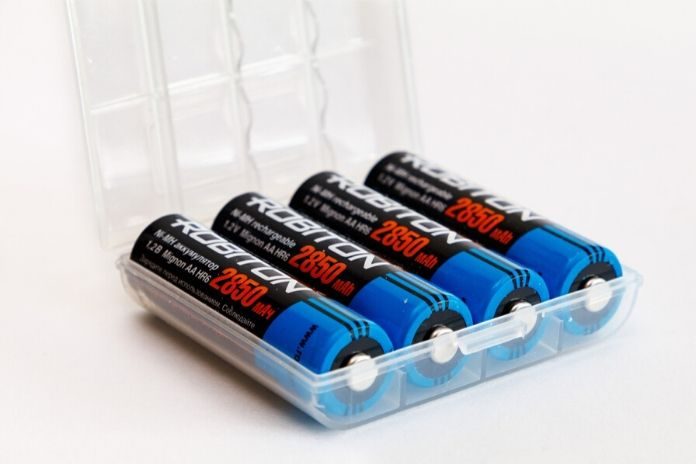
The way a battery work always starts with the chemical reaction within it. Regardless of the operation, whether it is supplying power to a circuit or receiving current to recharge, there’s always a chemical reaction happening within the battery.
When charging a cell, the charger’s voltage must be able to produce an amount of current higher than the battery’s internal resistance. However, if the amount of voltage is too high, there will be a risk of generating too much heat from the chemical reaction leading the battery to explode.
Can I use a 5V charger with a 3.7V battery? This is a tricky question to answer because there are some experts who claim that it can be possible. However, to give this question an answer, I will say no. Yes, basing on the above paragraph, the charger needs to have a slightly higher output current than the internal resistance of the battery that has to be charged.
But I think 5V is too much for charging a 3.7-volt battery because such a cell will only have a maximum voltage charge of 4.2 volts. Charging a 3.7-volt battery with a 5-volt charger will cause it to generate too much heat that may eventually lead the battery to explode.
Some battery experts claim that charging a 3.7-volt battery with a 5-volt or 6-volt can be doable, but it is a precarious process, especially for the battery because it will significantly shorten its battery life.
So, rather than risking yourself from being harmed and your battery from exploding, it is more recommended to charge your 3.7-volt battery using the right charger.
Finding yourself here, reading this article means that you are also one of those people who want to know if a 5-volt charger can charge a 3.7-volt battery. Then you also probably got your answer.
However, sticking around will enlighten you why I came up with my answer and allow you to learn more about how batteries work. So, grab a pen and a paper and get ready to take some notes.
Understanding How Voltage Works Within Batteries
To be enlightened, why is it dangerous to charge a 3.7-volt battery with a 5-volt charger, I think it is better to understand how voltage works within the cells.
First, you have to understand that batteries produce its voltage potential by placing its metal components with different affinities on its electrolyte. This creates what we call “open-circuit voltage,” and this will depend on the kind of metals and electrolyte the battery has.
At the moment the battery is subjected to charging or discharging, it will now develop what we call the “close circuit voltage,” regardless of the kind of operation, when the battery is in the charging state, the voltage within the battery increase, while the discharging state reduces the voltage within it.
However, no matter the operation, the energy will always be controlled by the current flowing through the entire circuit and the internal resistance of the battery.
Due to this, lower internal resistance generates low fluctuation, whether the battery is charging or discharging. On the other hand, if the battery has a higher internal resistance, the swing of voltage will be excessive.
This agitates the battery forcing it to take a lot of time to stabilize the voltage fluctuation fully. Temperature also has an effect on the voltage, where low temperature reduces the voltage, and high temperatures increase the voltage.
The Nominal Voltage of the 3 Different Types of Batteries
According to manufacturers, the kinds of batteries we are using today are ranked assigned with different nominal voltage values. These values are appointed by the following convention agreed by all battery manufacturers.
Learn each type of battery and its assigned nominal voltage.
1. Lead-Acid Battery
Two volts per cell is the nominal voltage of lead-acid batteries, but when it comes to measuring the open-circuit voltage of resting and charged lead-acid battery, the value should be 2.1 volts per cell.
This is because keeping the voltage below that value will risk the battery to suffer from sulfation when lead-acid batteries are in a charging state, the nominal voltage measures at 2.25 volts per cell, which is higher than normal charge.
2. Nickel-Based Battery
Both the NiCd and NiMH consumer batteries have a nominal voltage rating of 1.20 volts per cell. While the industrial, military, and aviation-grade NiMH and NiCd batteries have the original value of 1.25 volts per cell.
However, battery manufacturers claim that there’s no difference between the two ratings, and they are just used to for marking preference.
3. Lithium-ion Battery
A lithium-ion battery has a nominal voltage measured at 3.6 volts per cell, but there are some manufacturers that have a value of 3.7 volts per cell or a bit higher. These values allow battery producers to have a marketing advantage because the higher the nominal voltage, the higher the watt-hours the battery has.
A nominal voltage of 3.7 volts also causes to have an unfamiliar reference of voltage range between 11.1 volts and 14.8 volts when they’re three or four cells in the connection. It is much better than the conventional 10.80 volts to 14.40 volts range.
But you have to keep in mind that most equipment producers are using the 3.60-volt nominal voltage for systems powered by lithium-ion batteries.
With that being said, the nominal voltage is one of the basis the amount of voltage the charger must be rated.
If the charger has high enough voltage, that means the current it can produce can be too much for the internal resistance of the battery and would cause it to generate too much heat. When this happens, the battery may explode and will be rendered useless.
Risky Process of Charging a 3.7-Volt Battery With 5-Volt Source
As I mentioned earlier, there’s a possibility that you can charge a 3.7-volt battery with a 5-volt power source. However, you have to keep in mind that I also told you that it is a very risky process to carry out.
In case you want to try doing it, here’s a guide that will help you carry it out. Just make sure to proceed with extreme caution.
In this particular charging process, the power source you will have to use is a 5-volt battery or a USB charger, and you are going to charge a cell with a nominal voltage of 3.7 volts.
Here’s what you need to do.
Get a LiPo Charger for Charging a Single Cell Battery
If you want to charge a 3.7-volt LiPo battery, the first thing you have to do is to secure a LiPo charger, a board used for charging a single cell battery. With this small circuit board, you will have the opportunity to regulate the current flow by altering the pins’ placement, allowing you to successfully charge the battery.
Rearranging the Pin Placement of the Board
To allow the board to be used for charging, you have to rearrange the pin placement within it. The pin arrangement should be like this; pin one should be for the STAT, pin 2 for the Vss, pin 3 for Vbat, pin 4 for the Vdd, and the pin 5 for the PROG. This will allow the board to charge at a rating of 4.2 volts.
Connecting the Board to the Source and the Battery
In this case, you are now ready to connect the makeshift charger to the power source and the battery. One side should be connected with a USB charger of a computer then the other side for the battery. Ensure that you get all the terminal on the correct connection to ensure the smooth flow of current.
That is how you charge a 3.7-volt battery with a 5-volt power source. Keep in mind that this is a bypass process that is not recommended. So, make sure to proceed with extreme caution and be careful with every step.





